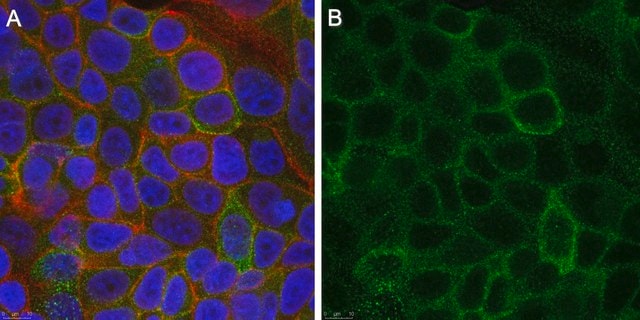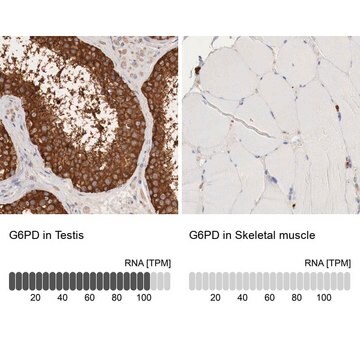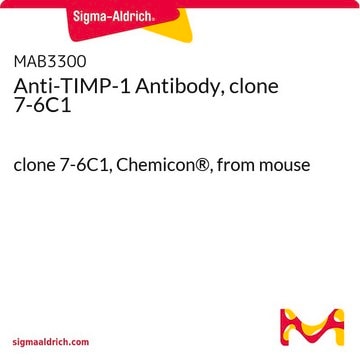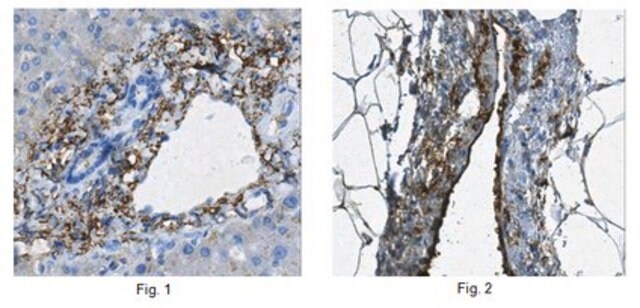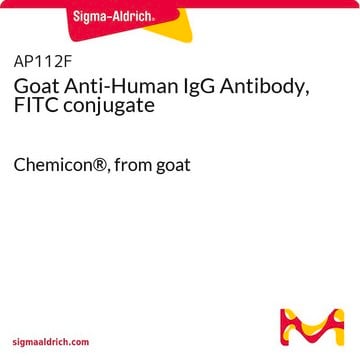MABS2233
Anti-Intestinal Villus Antibody, clone B6A6
Synonym(e):
Intestinal crypt cells
About This Item
Empfohlene Produkte
Biologische Quelle
rat
Qualitätsniveau
Konjugat
unconjugated
Antikörperform
purified antibody
Antikörper-Produkttyp
primary antibodies
Klon
B6A6, monoclonal
Aufgereinigt durch
using protein G
Speziesreaktivität
mouse
Verpackung
antibody small pack of 100 μg
Methode(n)
flow cytometry: suitable
immunohistochemistry (formalin-fixed, paraffin-embedded sections): suitable
Isotyp
IgG2aκ
Epitopsequenz
Unknown
Protein-ID-Hinterlegungsnummer
UniProt-Hinterlegungsnummer
Versandbedingung
ambient
Posttranslationale Modifikation Target
unmodified
Verwandte Kategorien
Allgemeine Beschreibung
Spezifität
Immunogen
Anwendung
Isotype testing: Identity Confirmation by Isotyping Test.
Isotyping Analysis: The identity of this monoclonal antibody is confirmed by isotyping test to be mouse IgG2a .
Tested Applications
Flow Cytometry Analysis: A representative lot detected Intestinal Villus in Lgr5-GFP mouse intestinal cells ( Data courtesy of Prof. Melissa Wong, Ph.D., Oregon Health & Science University, Portland, Oregon USA).
Immunohistochemistry Applications: A representative lot detected Intestinal Villus cells in Immunohistochemistry applications (Wang, F., et al. (2013). Gastroenterology. 145(2): 383-95.e1-21).
Flow Cytometry Analysis: A representative lot detected Intestinal Villus in Flow Cytometry applications (Wang, F., et al. (2013). Gastroenterology. 145(2): 383-95.e1-21; Smith, N.R., et al. (2017). Cell Mol Gastroenterol Hepatol. 3(3): 389-409; Yan, K.S., et al. (2017). Cell Stem Cell. 21(1):7 8-90.e6; Smith, N.R., et al. (2018). Cell Mol Gastroenterol Hepatol. 6(1): 79-96).
Note: Actual optimal working dilutions must be determined by end user as specimens, and experimental conditions may vary with the end user
Physikalische Form
Lagerung und Haltbarkeit
Sonstige Hinweise
Haftungsausschluss
Not finding the right product?
Try our Produkt-Auswahlhilfe.
Lagerklassenschlüssel
12 - Non Combustible Liquids
WGK
WGK 1
Analysenzertifikate (COA)
Suchen Sie nach Analysenzertifikate (COA), indem Sie die Lot-/Chargennummer des Produkts eingeben. Lot- und Chargennummern sind auf dem Produktetikett hinter den Wörtern ‘Lot’ oder ‘Batch’ (Lot oder Charge) zu finden.
Besitzen Sie dieses Produkt bereits?
In der Dokumentenbibliothek finden Sie die Dokumentation zu den Produkten, die Sie kürzlich erworben haben.
Unser Team von Wissenschaftlern verfügt über Erfahrung in allen Forschungsbereichen einschließlich Life Science, Materialwissenschaften, chemischer Synthese, Chromatographie, Analytik und vielen mehr..
Setzen Sie sich mit dem technischen Dienst in Verbindung.


